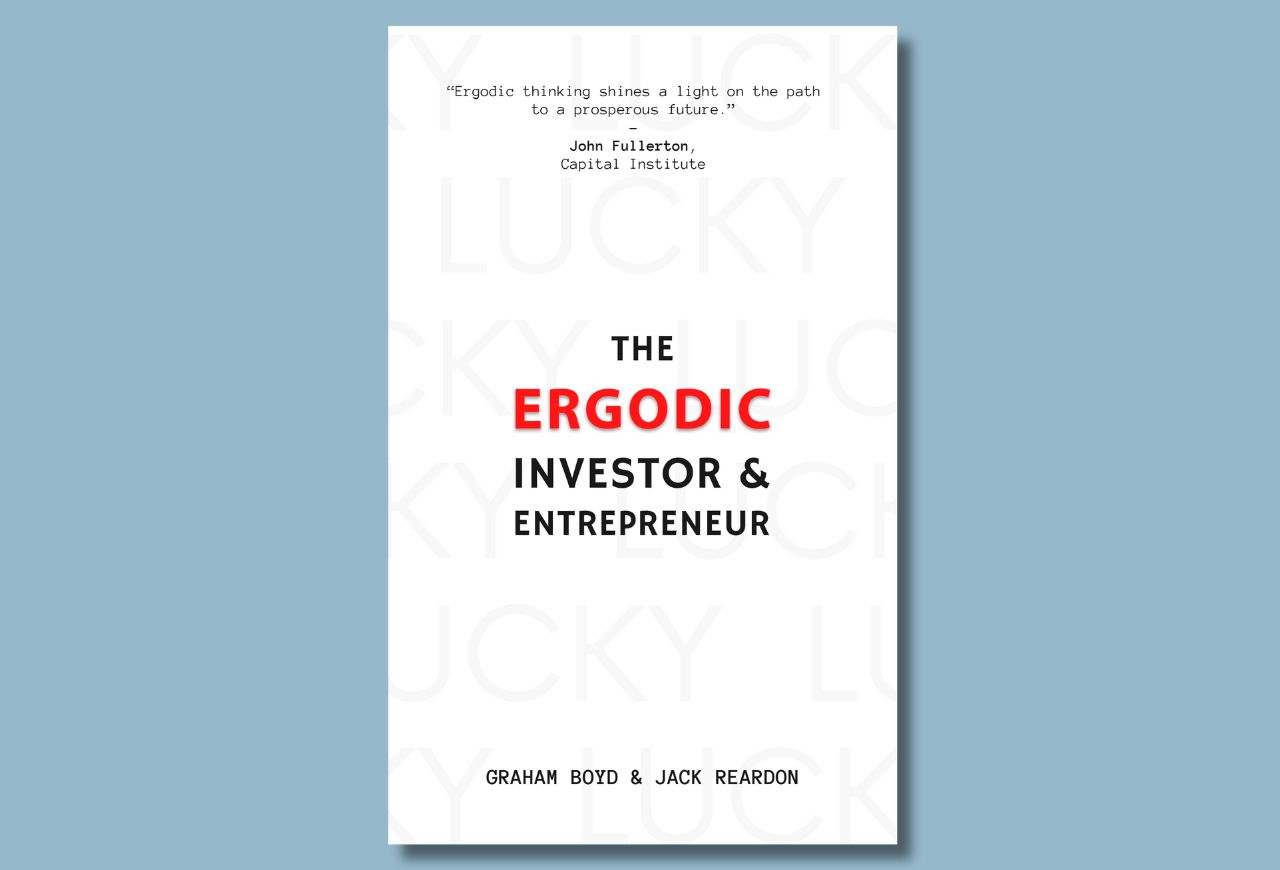Give two maverick academics an idea to kick around and you get some interesting insights. But when it comes to solutions, Christopher Walker was left wanting.

In brief
- This book makes big claims, not least that “if you are investing with an impact or venture philanthropy objective, expecting growth in human and / or environmental as well as financial capital, you want an ergodic strategy”. But what is that?
- Much is done to underscore the importance of incorporating randomness into our modelling.
- But the meaning of ‘Ergodic’, a much over used word, seems to shift during the book and the possible solutions are not fully explored.
Graham Boyd was originally a particle physicist who built his career at Procter & Gamble before leaving in 2008, “driven by seeing the climate and biosphere crisis clearly”.
He bumped into Jack Reardon at a conference – randomness is central to this book – and began asking awkward questions, something you’ll find easy to believe when you read this book. Reardon sums it up: “I am who I am because of these unpredictables.”
The resulting partnership bears fruit here.
Groundbreaking
The authors certainly challenge us to think differently. They quote Abraham Maslow: “He that is good with a hammer tends to think everything is a nail.” But they also go on to admonish the reader: “Your success is quite likely because you’re good at applying what you’ve come to believe works in business and investing. Now it’s time to level up, change the game, from being an expert in hammers and nails to being an expert in nuts and bolts.”
They go on to belittle those who see investing, or indeed business management, as a predictive science, likening them to adherents to the “cargo cults” discovered by anthropologist Richard Fenyman.
Melanesian Islanders observing American and Japanese cargo planes, not understanding what was actually happening, began following rituals patterned on what they saw the troops doing before a plane brought supplies. “So they flattened strips of ground, built a hut in the middle, and wore coconut shells fashioned to look like headphones.”
Having attended endless investment seminars given by hedge fund managers, often themselves physicists, this brings a smile to my lips.
Instead of the predictive sophistry, the authors suggest what they describe as an ‘ergodic’ solution.
Ergodic solution
I rather wish they wouldn’t. The word is used several thousand times in the course of a slim volume, and seems to mean several different things.
At the heart of the idea for this book is that we are “biased to discount the role of randomness, the role of unpredictables in our lives and our businesses, to see cause and effect even where there is none. We feel safer, and in control, believing that everything is inherently predictable, and that if we try harder we can predict everything”.
The authors suggest that too many investment strategies are like the venture capital fund run by the character Zaphod Beeblebrox in Douglas Adams’ ‘Hitchhiker’s Guide to the Galaxy’ which “could access all of the parallel universes for each of the companies it invests in, and average each company over all of its parallel universes. [Breaking] the laws of physics”.
“The single most important lesson,” they continue “is that our economy is filled with known, unknown, and even unknowable unpredictables.” So the intelligent investor “makes unpredictables work for them, not by trying to eliminate mystery and unknowability, but instead by using their skills and talents to create conditions that maximise the probability and size of beneficial outcomes, while minimising the impact of detrimental outcomes emerging from unpredictables”.
Unanswered questions
This is all good stuff and confirms the dangers of headphones made from coconut shells. But the knowledge of how to craft an investment strategy that will successfully exploit unpredictables is somehow missing from the book.
This is a shame because, according to the authors, climate change means “the transformation of the planet has only just begun, far more is coming, and the path from here to there will be a sequence of unpredictables”.
Likewise, and somewhat stretching the meaning of ergodic, they tell us: “The big idea in an ergodic investment strategy may seem counterintuitive to you: a blend of hard competition and hard collaboration. Hard collaboration means that every company in a highly diverse ecosystem commits to putting a small, fixed percentage of their profit (if they make one that year) into a central pool, which is then immediately shared out again to all companies in the ecosystem.”
I’d like to see that one tried. They give us a few examples of what they mean, only to dismiss them. “Public Benefit Corporations (PBC) and the whole B-Corp movement embed purpose and consider the benefit to multiple stakeholders in governance, but can lack the teeth and direct inclusion in governance and wealth sharing of all key stakeholders to truly live up to their potential. Equally, For Purpose, Steward Owned, and other approaches provide some of the foundations… but other key aspects needed for excellent execution of an ergodic investment strategy need to be added.”
How? I was left wanting. And with the feeling that this was an advertisement for consulting services rather than a considered set of workable solutions.





